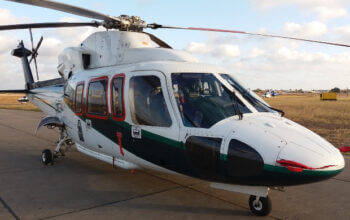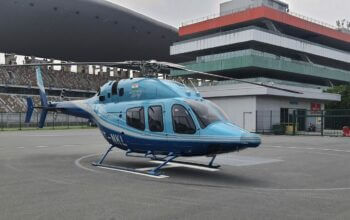Estimated reading time 6 minutes, 28 seconds.
While the Royal Canadian Air Force Directorate of Flight Safety continues its investigation into the crash of a CT-114 Tutor Snowbird enroute to the Atlanta Air Show last October, the Canadian Armed Forces Air Demonstration team has resumed flying in preparation for the 2020 airshow season.
Pilots with 431 Air Demonstration Squadron at 15 Wing Moose Jaw, Sask., began training flights on Dec. 6, 2019, following an operational pause that grounded the Snowbird fleet and pushed back pre-season preparation by about one month.

The Snowbirds are slated to begin their airshow schedule on June 6 and 7 at Selfridge Air Force Base in Michigan, but that start date could be changed if the demo team feels it still needs more preparation.
“We have offset our season so we can have roughly the same amount of training that we normally have every year,” said Maj Jean-Francois Dupont, the team lead known as Snowbird 1. “But we need to be flexible because there are so many changes.”
In addition to the flying pause, the nine-person team is introducing two new pilots, one of whom is still being confirmed. Dupont, also the deputy commander of the squadron, cautioned that while winter training is progressing, it’s too early to assess when the team will be ready.
“As we get closer to (spring training in Comox) in May, we’ll have a good idea if we can start the show season on time, or if we need to delay a little more,” he explained. “Our goal is to make an exciting and safe show, so if we have any doubts or anyone is struggling to get to that point, we will delay the show season as required.”
In a typical pre-season, the Snowbirds will complete between 80 and 100 missions during the winter months before starting spring training at 19 Wing Comox, B.C. Those numbers vary depending on weather and aircraft availability, but “our goal is not to scale that back,” said Dupont, who previously flew as Snowbird No. 2 for the 2010 to 2012 seasons.
He noted, however, that as temperatures plummeted below -35 C in early January, aircraft were more difficult to start and operate, further slowing down some of the training. “It is really tough on the pilots and the ground crew to get the jet ready when it is really cold. We take our time. We make sure we don’t rush anyone. So it slows everyone down and makes the day longer. And when it is really cold, we [limit] our range from the airport just so we stay safe.”
Flight safety investigators have yet to pinpoint exactly what caused the CT-114 to lose engine thrust as the team was flying to an airshow at the Atlanta Motor Speedway in Hampton, Ga., on Oct. 13, 2019. The pilot, Capt Kevin Domon-Grenier of Saint-Raymond de Portneuf, Que., lost engine power shortly after a routine check while inverted and opted to eject after determining the aircraft was too low to attempt a safe recovery to an airport. He ejected successfully, sustaining minor injuries, but “reported anomalies with the ejection sequence,” according to an occurrence summary by investigators.
While investigators focus on the cause of the engine mechanical failure and the ejection sequence, a full risk assessment was conducted on the likelihood of a reoccurrence before the Tutors could resume flying.
“Because there is an ongoing investigation, there is not much detail we can provide,” said Dupont, a CH-149 Cormorant helicopter flight commander by training with 442 Transport and Rescue Squadron in Comox. “At the end of the day, we were confident with the jet and the engine, and we went back flying.”
Until more is known about the cause, the pilots will fly higher and at faster speeds during winter training “just to give [them] extra time to make a decision and keep everybody safe,” he said.
Though team members received counselling to process the crash, most were keen to get back in the air. “Like when you fall off your bicycle, when its safe, the sooner you can go back up flying, the easier it is to get going,” he noted. “We didn’t rush into it, but we flew as soon as we could.”
While the flying delay hampered winter training, the greater challenge may be incorporating two new team members in the shorter time span. Snowbird pilots change on a regular basis due to new postings, career opportunities and family reasons, but rarely does the squadron attempt to change two senior pilots right before the start of a season. Normally, new pilots would begin conversion on the CT-144 over the summer and start training in the fall.
“Evert year we can change up to half of the team just by the nature of the way we do our work, so we were already planning to have a bit of a new team,” said Dupont. “But two of our more senior pilots decided not to continue for the 2020 season, so we are making changes that will bring us a full team.
“We are currently up to eight of nine. We are just working on that last pilot. We do have a solution, we just want to make sure it is ready to go. We’ll most likely announce the full team sometime [in February].”
The 2020 air show season, which will include about 30 shows, marks the 50th anniversary for the Snowbirds.








